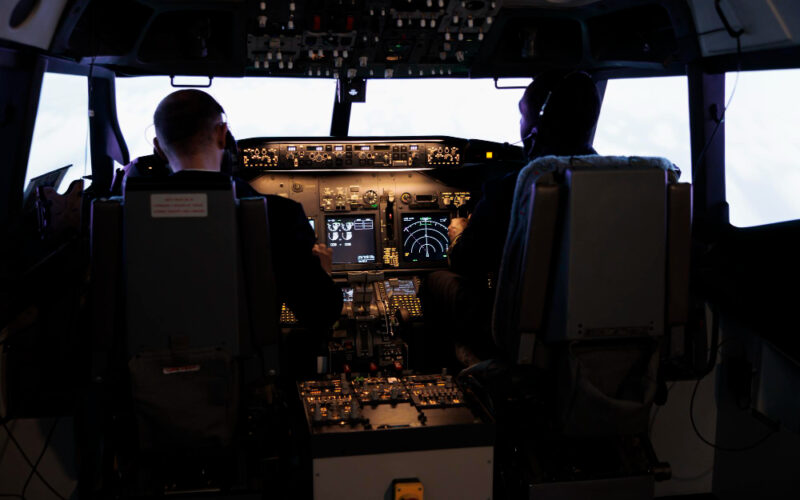One of the most crucial aspects of pilot safety is navigation. It notifies the pilot which way the planes are flying and where they are positioned. Without the information, the jet could crash into mountains or land somewhere other than where the captain intended.
To prevent this, the flight navigation is made. In the early days of aviation history, the pilots used a navigation method called pilotage and dead reckoning. Pilotage is a navigation method that uses only the eyes and maps to find out the pilot’s position. And dead reckoning is a method using maps and the simple speed * time = distance equation. It was a challenging and dangerous procedure since wind and air density may drastically alter a plane’s direction. It is very likely that pilots will be lost. Being lost in aviation requires more fuel, which increases the likelihood of fuel exhaustion and accidents. Not only that, but dead reckoning was extremely risky because if the plane deviated from the specified route, the pilot might crash into terrain or other aircraft (Wikipedia Contributors, 2019).
Following that, the new method is airborne; this is called an airway beacon.
It’s an airplane lighthouse. It indicates which way to go to the pilot by blinking two different colors of light: green and red. The red indicates the airport, while the green indicates that an airport is nearby. However, the airway beacon has a drawback. Clouds may be unable to see light from the airway. It can also be confused with surrounding lights, such as city lights.
So, the new radio range was made and first used in 1928 in the US. This method of navigation uses radio frequencies, which send the Morse code “N’ (- ) and ‘A’ ( ). Furthermore, the signal is sent from four antennas located in our skirt. When the two signals meet, it makes a continuous sound that tells the pilot he is going in the right direction, also called a beam. The beam has four spots per radio range, and for pilots to know which path they are on, there are additional instruments. It was called a fan marker beacon. The fan marker beacon shoots radio upward, which contains information about the course. Moreover, it also tells a Morse code of 1, 2, 3, and 4. But also, this thing had a disadvantage, since the pilot should find the beam, and sometimes it takes a lot of time to find it. Also, this method uses LF-MF frequency, which can be inaccurate due to various external factors (Wikipedia, 2023).
Loop antenna
The loop antenna is an antenna that is shaped like an O-shaped ring. This antenna is very sensitive to direction. The signal varies in direction. This can be used to direct the direction in which the signal comes from. When the loop antenna and the direction of a wave become parallel, the signal will be maximum, and when perpendicular, it will be minimum. This minimum signal is also called null, and navigation using a loop antenna is to find the direction by using this null.
The loop antenna is placed on an airplane and fixed in the same direction as the plane’s direction. The instrument called a radio compass points left or right and tells the direction of the radio station by using the signal from the loop antenna (SINGH, 2020).
In 1946, the VOR was made. The VOR stands for ‘VHF omnidirectional range.” VHF stands for very high frequency. This is meant to replace the radio range. This VOR is better than radio range in every single way. VOR can give pilots information in all 360 degrees, which were 4 before. Also, VOR uses VHF, making it less tolerable (Faa.gov, 2010).
Nowadays, the VOR is an industry standard for aviation navigation.
References
Faa.gov. (2010). Aeronautical Information Manual – AIM – Navigation Aids. [online] Available at: https://www.faa.gov/air_traffic/publications/atpubs/aim_html/chap1_section_1.html [Accessed 20 May 2023].
SINGH, S. (2020). How Aircraft Navigated Before GPS. [online] Simple Flying. Available at: https://simpleflying.com/how-aircraft-navigated-before-gps/ [Accessed 20 May 2023].
Wikipedia Contributors (2019). Air navigation. [online] Wikipedia. Available at: https://en.wikipedia.org/wiki/Air_navigation [Accessed 20 May 2023].
Wikipedia. (2023). Low-frequency radio range. [online] Available at: https://en.wikipedia.org/wiki/Low-frequency_radio_range [Accessed 20 May 2023].
